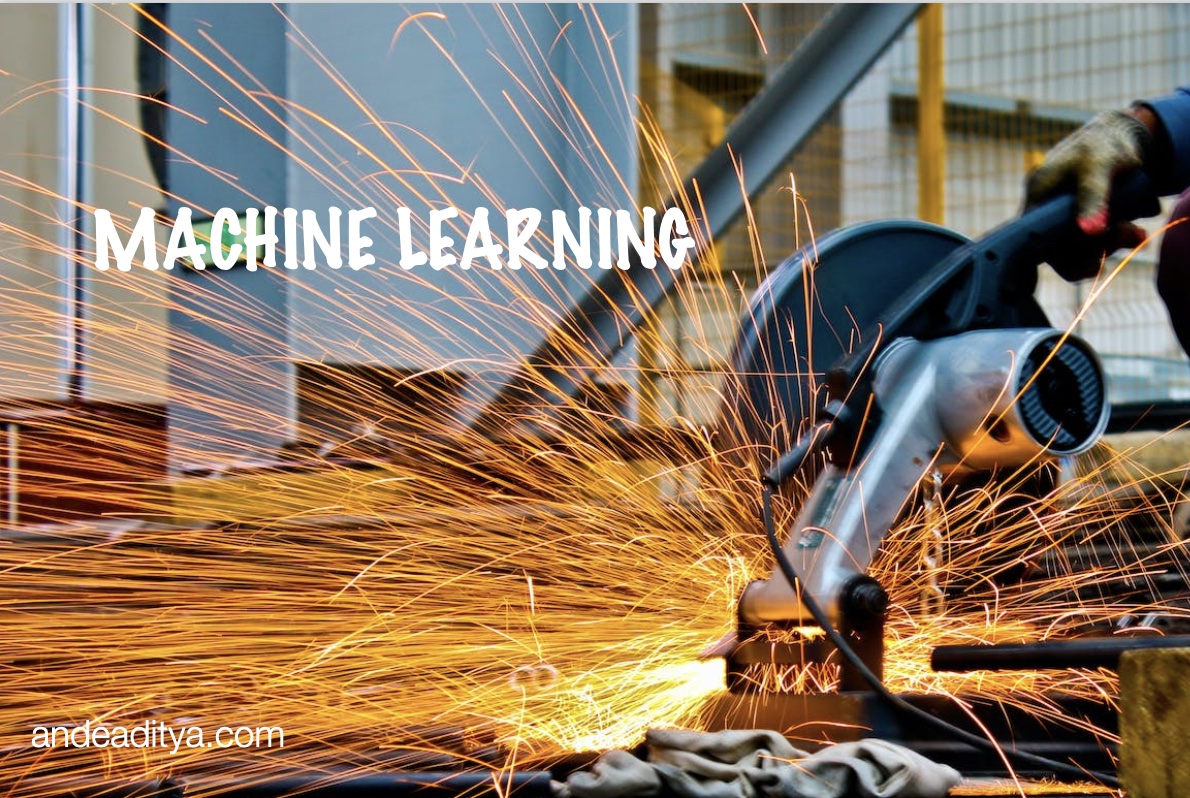Machine Learning – Now and in the coming years
Machine learning (ML) is a commonly used type of artificial intelligence (AI) and is one of the fastest-growing fields in technology. As the workplace, products, and service expectations are changing exponentially through digital transformations, more companies are leaning into machine learning solutions to optimise, automate, and simplify their operations
.
Machine learning addresses the question of how to build computers that improve automatically through experience. It is one of the most rapidly growing technical fields, lying at the intersection of computer science and statistics, and the core of artificial intelligence and data science. Recent progress in machine learning has been driven both by the development of new learning algorithms and theory and by the ongoing explosion in the availability of online data and low-cost computation. The adoption of data-intensive machine-learning methods can be found throughout science, technology and commerce, leading to more evidence-based decision-making across various walks of life, including health care, manufacturing, education, financial modelling, policing, and marketing.
The field of machine learning is quite young but expanding rapidly, often by inventing new formalizations of machine-learning problems driven by practical applications. One major trend driving this expansion is a growing concern with the environment in which a machine-learning algorithm operates. Here the word “environment” refers in part to the computing architecture; whereas a classical machine-learning system involved a single program running on a single machine, it is now common for machine-learning systems to be deployed in architectures that include many thousands or ten of thousands of processors, such that communication constraints and issues of parallelism and distributed processing take centre stage.
The word “environment” also refers to the source of the data, which ranges from a set of people who may have privacy or ownership concerns to the analyst or decision-maker who may have certain requirements on a machine-learning system (for example, that its output be visualizable), and to the social, legal, or political framework surrounding the deployment of a system.
The environment might include other machine learning systems or other agents, and the overall collection of systems may be cooperative or adversarial. Broadly speaking, environments provide various resources to a learning algorithm and place constraints on those resources. Increasingly, machine-learning researchers are formalising these relationships, aiming to design algorithms that are probably effective in various environments and explicitly allow users to express and control trade-offs among resources.
Enlisted below are some of the top trends in machine learning at present:
5 Emerging Trends To Watch In Machine Learning
- Automation through MLOps
- ML democratisation and broadening access
- Achieving scalability through containerization
- APIs and the wider availability of prepackaged tools
- ML and time series solutions for future planning
1. Automation Through MLOps
Many businesses are investing significant time and resources into Machine Learning development because they recognize its potential and urgency for automation.
When a Machine Learning model is designed with business processes in mind, it can automate a variety of business functions across marketing, sales, HR, and even network security. MLOps and AutoML are two of the most popular applications of machine learning today, giving teams the ability to automate tasks and bring DevOps principles to machine learning use cases.
According to scientists, scaling AI for the enterprise requires a new set of tools and skills designed for modern infrastructure and collaboration. Teams using manual deployment and management find they are quickly strapped for resources and after getting a few models into production, cannot scale beyond that. Machine learning operations (MLOps), is the set of practices and technology that enable organisations to scale and manage AI in production, essentially bringing the development practice of DevOps to machine learning. MLOps helps data science and IT teams collaborate and empowers IT teams to lead production machine learning projects, without having to rely on data science expertise.
AutoML solves a few of the biggest blockers to ML adoption, including faster time to ROI and more quickly and easily developing models. AutoML automates key parts of the data science workflow to increase productivity, without compromising model quality, interpretability, and performance. With AutoML, one can automate algorithm selection, feature generation, hyper-parameter tuning, iterative modelling, and model assessment. By automating repetitive tasks in the workflow, data scientists can focus on the data and the business problems they are trying to solve and speed time from experiment to impact.
Automation through ML is desirable in theory, but in practice, it is sometimes difficult for business leaders to envision how ML tools can optimise their business operations.
2. ML Democratisation And Broadening Access
Machine learning is still considered a niche and complex technology to develop, but a growing segment of tech professionals are working to democratise the field, particularly by making ML solutions more widely accessible.
Researchers believe that ML democratisation involves creating easier access to develop and deploy ML models as well as giving more people access to useful ML training data.
Many times good training data is scarce. Low-data learning techniques are helping in enterprise AI use cases, where customers want to adapt pre-trained out-the-box models to their unique business context. In most cases, their own data sets are not that big, but methods such as transfer learning, self-supervised learning, and few-shot learning help minimise the amount of labelled training data needed for an application. ML democratisation is also about creating tools that consider the backgrounds and use cases of a more diverse range of users. More users and developers are starting to recognize the benefit of a diverse team for developing ML solutions.
Ignoring the technical aspect momentarily, one must focus on the human aspects of AI as well at times. There seems to be a trend building around the democratisation of the ML ecosystem, bringing in more diverse stakeholders at every junction in the value chain.
Bias is probably the greatest obstacle to ML efficacy, and leading companies are learning and inventing ways to combat bias and build better applications by embracing diversity and inclusion (D&I).
3. Achieving Scalability Through Containerization
ML developers are increasingly creating their models in containers. When a machine learning product is developed and deployed within a containerized environment, users can ensure that its operational power is not negatively impacted by other programs running on the server. More importantly, ML becomes more scalable through containerization, as the packaged model makes it possible to migrate and adjust ML workloads over time.
Senior scientists attached to companies working with a variety of ITOps solutions believe that containerized development of machine learning is the best way forward, particularly in the case of digital enterprises incorporating autonomous operations. Containers allow autonomous digital enterprises to have isolation, portability, unlimited scalability, dynamic behaviour, and rapid change through advanced enterprise DevOps processes.
ML workloads are typically spiky and require high scalability and real-time stream processing in some cases. For example, when one takes a look at ML projects, they typically have two phases – algorithm creation and algorithm execution. The first involves a lot of data and data processing. The second type requires a lot of computing power in production. Both can benefit from container deployment to ensure scalability and availability.
4. APIs And Wider Availability Of Prepackaged Tools
In another trending effort toward Machine Learning democratisation, several ML developers have perfected their models over time and found ways to create template-like versions, available to a wider pool of users via API and other integrations.
According to some experts, prepackaged ML tools, particularly via APIs and digital storefronts, are some of the most common and useful applications of machine learning today:
5. ML And Time Series Solutions For Future Planning
Machine learning models can only improve their functionality over time if they are consistently fed new data in intervals. Since so many Machine Learning models rely on timeline-based updates, several ML solutions are using a time series approach to improve the model’s understanding of the what, when, and why behind different data sets.
The prospects of Machine Learning are immense. A celebrated entrepreneur through his latest passion project Neuralink is claiming to develop a brain implant that would link the human brain directly to computers. He claims this brain-computer interface (BCI) would enable humans to carry out actions through thought alone. Musk hopes that the company’s technology will one day not only treat but cure brain disorders and even save memories so people can revisit them like photo albums.
Future of Machine Learning in the coming decades
Machine learning solutions continue to incorporate changes into businesses’ core processes and are becoming more prevalent in daily lives. The global machine learning market is predicted to grow from $8.43 billion in 2019 to $117.19 billion by 2027.
The following few areas are thought of as futuristic machine learning advancements:
- Accurate Results for the Search on the Web Engine: When one scrolls through a search engine in search of an article, he is probably not aware that the ranking and the hierarchical order of the search result outcomes are done with a purpose. The techniques of machine learning have a tremendous impact on search engine outcomes. Over the next few years, search engines would boost both the user experiences and the host experiences rapidly in fast progress. With further neural network growth and development blended with evolving deep learning techniques, future search engines will be far better in providing responses and perceptions that are significantly germane to the searchers, and explorers of the web.
- Accurate Tailor-made Customisation: Corporations could refine their understanding of their target audience using machine learning to inform the enhancement of the existing products, new product development, merchandising, and gross revenue. Developers, programmers, and engineers could customise products far more precisely than ever before with algorithms to break down exactly how their products are used, maximising value for both the organisation and the clients. With more advancements and discoveries in the dynamic field of machine learning and its algorithms, for the clients on a larger scale, it would be possible to see exact targeting and fine-tuned customisation in the near future.
- The surge in Quantum Computing- No commercially-ready quantum hardware or algorithms applications are readily accessible at present. Nonetheless, in order to get quantum computing off the ground, several government agencies, academic institutions, and think tanks have spent millions. In the futurity of machine learning, quantum computing is set to have an enormous role. As the world would witness instant processing, rapidly learning, expanded capacities, and enhanced capabilities the introduction of quantum computing into machine learning would metamorphose the domain completely. This implies that in a tiny split moment, complicated issues that one might not have the capacity to tackle with conventional methods, and existing technologies might well be done so.
- Mass Growth of Data Units: It would not be unusual to be engrossed with coding, systematic activities, engineering by technology, and information units. Further developments in machine learning can further improve these units’ everyday operations toward the efficient realisation of the targets. In the coming decades, machine learning would be one of the cornerstone methods for creating, sustaining, and developing digital applications. It implies that data curators and technology engineers spend a comparatively lesser time period in programming, and upgrading ML techniques, so instead make they understand and continuously improve their operations.
- Fully Automated Self-Learning System: In software engineering, machine learning would be just another component. In addition to standardising the way people implement machine learning algorithms, open-source frameworks such as Keras, PyTorch, and Tensorflow have also eliminated the basic requirements for doing just that. These types of ecosystems are slowly but steadily coming out, with so many technologies, databases, and resources accessible online today. This would lead to environments that are near or close to zero codings, and so an automated system emerges.
- Cyber Security: Banks and financial institutes implement machine learning to halt malpractices. Phishing is one of the major concerns these days, to rectify phishing emails various classification and regression techniques are imposed to prevent customers from online fraud.
- Computer Vision: As the name suggests “Computer Vision” works the same as it is known for. It provides the vision to the machine or computer. This technique empowers the machines to recognize and analyse digital images, videos and graphics. Based on the reorganisation and analysing it would deliver the output with minimum error.
- Automotive Industry: With the help of Machine Learning, the concept of “Safe Driving” would be clearer. In the present scenario, renowned firms like Google, Tesla, and Mercedes Benz have already invested a huge amount of effort in designing the “Auto Pilot” concept. Using wireless sensors, the Internet of Things, HD cameras and audio/ video recognition systems it is possible to implement this concept properly.
Scientists and experts have been working to develop a computer that acts more like humans in the post-industrialized phase. The thought machine is the greatest blessing of Artificial Intelligence to civilization; the fantastic entry of this self-propelled machine has swiftly altered business operational laws. Self-driving cars, automated assistants, autonomous factory workers, and smart cities have recently shown that smart machines are feasible. The machine learning revolution will stay with us for a long time and so will the future of Machine Learning.
Please read more about Ande’s thought leadership on Future Businesses and the top 10 technologies that would prevail in our future times.
Bio Revolution | Genetic Engineering | Clean Energy | Virtual Reality | Sustainability | Nano Technology | Machine Learning | Internet of Things (IoT) | Artificial Intelligence | Cyber Security & Cloud Computing








